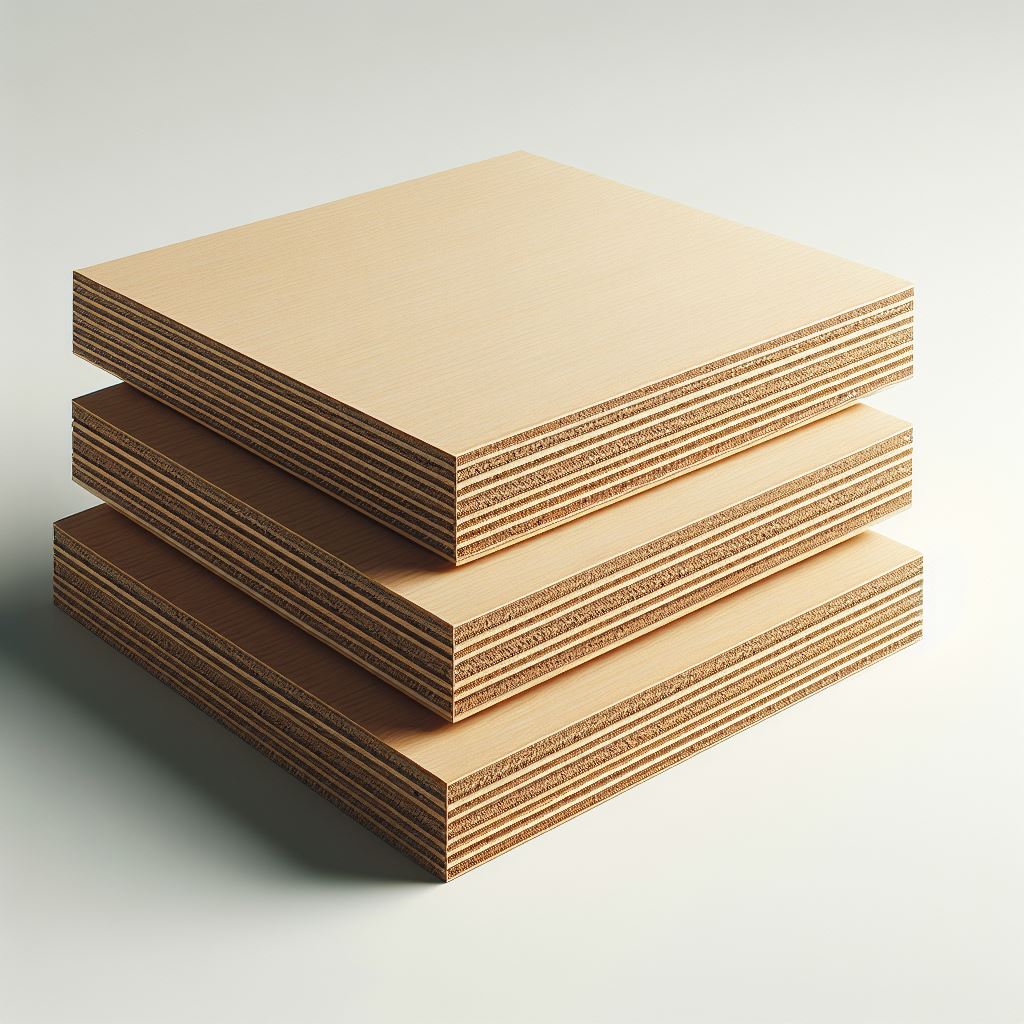In the world of woodworking, there’s a showdown between two heavyweights: Plywood and High-Density Moisture-Resistant (HDMR) boards. But what’s the real difference, and which one should you choose for your project? Let’s break it down in a way that’s easy to understand.
Plywood
Overview:
Plywood is a versatile engineered wood product made from thin layers of wood veneer glued together with adjacent layers having their wood grain rotated up to 90 degrees to one another. This cross-graining technique enhances the structural integrity of the board, making it highly resistant to warping, cracking, and twisting.
Advantages:
-
- Strength and Durability: Plywood is renowned for its strength, making it suitable for heavy-duty applications.
- Versatility: Available in various grades, sizes, and thicknesses, plywood can adapt to a wide range of projects.
- Cost-Effective: Compared to solid wood, plywood offers excellent value for money.
Disadvantages:
-
- Moisture Susceptibility: Traditional plywood is prone to moisture damage, especially in humid environments.

Rtree Water Resistant Boards
Overview:
Rtree water resistant boards are engineered to combat moisture-related issues, making them ideal for environments prone to humidity and moisture exposure. These boards are manufactured using high-density fiberboard (HDF) as the core, reinforced with moisture-resistant additives, and coated with a protective layer to enhance durability.
Advantages:
-
- Superior Moisture Resistance: Water resistant boards excel in resisting moisture, minimizing the risk of warping, swelling, or deterioration.
- Strength and Stability: With a high-density core, Rtree water resistant boards offer excellent structural integrity and stability.
- Versatility: Suitable for both interior and exterior applications, Rtree water resistant boards are highly versatile.
-
- Cost: Rtree water resistant boards is more cost-effective compared to traditional plywood.
Making the Decision
When to Choose Plywood:
-
- For projects where strength and durability are paramount, such as structural applications and heavy-duty furniture.
- In dry environments or when moisture exposure is minimal.
When to Choose Water Resistant board:
-
- For projects in humid or moisture-prone environments, such as furniture, kitchen cabinets, and bathroom fixtures.
- When superior moisture resistance is a priority.
| Criteria | Plywood | Rtree water resistant |
|---|---|---|
| Moisture Resistance | Normal plywood are not meant for moisture resistance | Excellent; resistant to warping and swelling in moist conditions |
| Strength and Durability | Strong; resistant to bending and cracking | High; sturdy core offers excellent stability |
| Versatility | Versatile; available in various grades and sizes | Highly versatile; suitable for a wide range of applications |
| Cost | Slightly more expensive | Cheaper than plywood |
| Applications | Suitable for dry environments or projects with minimal moisture exposure | Ideal for projects in damp or wet environments where moisture resistance is crucial |
| Surface Finish | Depends on quality. Generally not very smooth | Smooth; compatible with various finishing options |
| Weight | Moderate; depends on thickness and density | Heavier |
| Environmental Impact | Varies based on sourcing and manufacturing processes | Similar to plywood, may offer eco-friendly options depending on production methods |
Conclusion:
Both Plywood and Rtree water resistant board have their own set of advantages and disadvantages, making them suitable for different applications. While Plywood offers strength and versatility, water resistant board shines in its superior moisture resistance and stability. Understanding the specific requirements of your project will help you make an informed decision between these two engineered wood products. Whether you’re crafting furniture, building cabinets, or undertaking structural work, choosing the right material ensures the success and longevity of your project.